A relative gave me this CFL, which had started spewing fire one day. Naturally I was curious as to what caused this.
Before we get started – the smell! This thing has the typical “fried electronics” smell, but magnified by 1000. It stunk up my whole garage after being inside for just a day!
Now for the good stuff. Here are some photos of what I found, with a few comments along the way.
—
The culprit:
Looking more closely, we can see a resistor/axial component in the burnt hole:
After popping the top off, we can see the PCB. It appears that some of the solder joints near the charred section have actually reflowed (or there are a lot of poor solder joints). I suspect this is an indicator of just how hot it got inside here (solder melts near 260°C):
We can even see carbon built up on the lid:
After removing the top, and making some precision cuts…
We’re in! Wow, what a mess:
Looks like the failure occurred right around the neutral wire connection to the PCB. The main electrolytic is bulging is likely the cause of the noxious smell. Looks like the film cap blew up as well:
In the bottom-right of the previous picture, you may have noticed what looks like a coil of wire. It looks like (part of) a toroidal inductor/transformer, but the top half the core is missing!
Interestingly, the high-voltage section appears to be fine:
Inside the base – this is definitely the Neutral wire
—
Do you have any ideas or comments about this failure? If so, please leave a comment below!
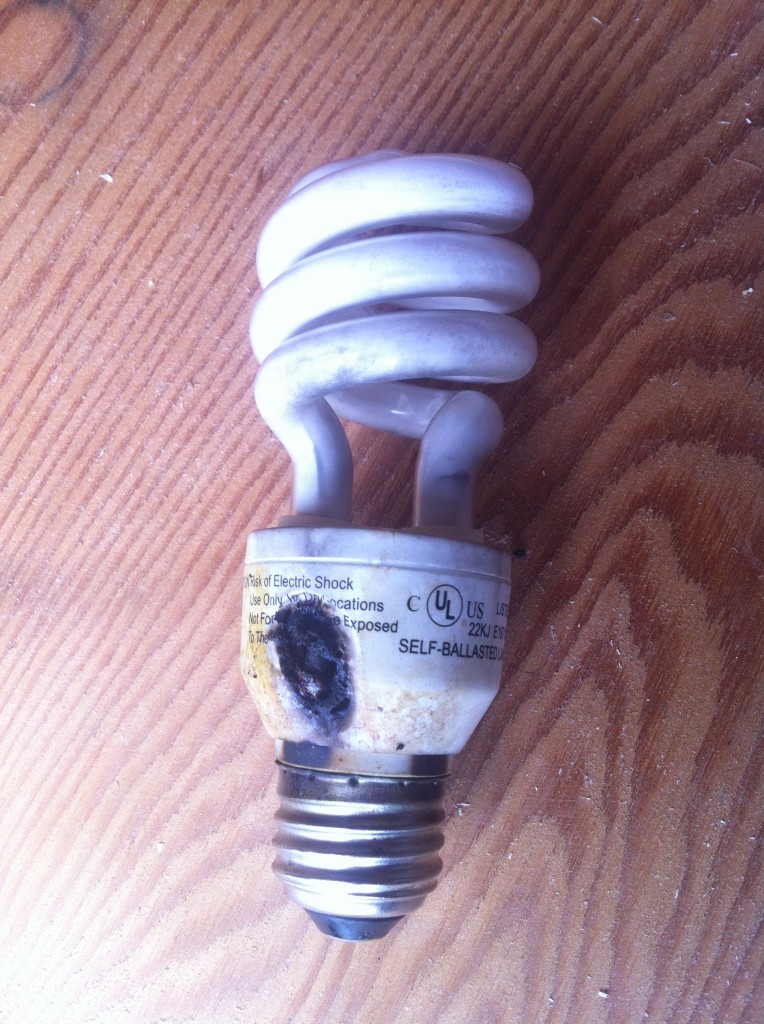
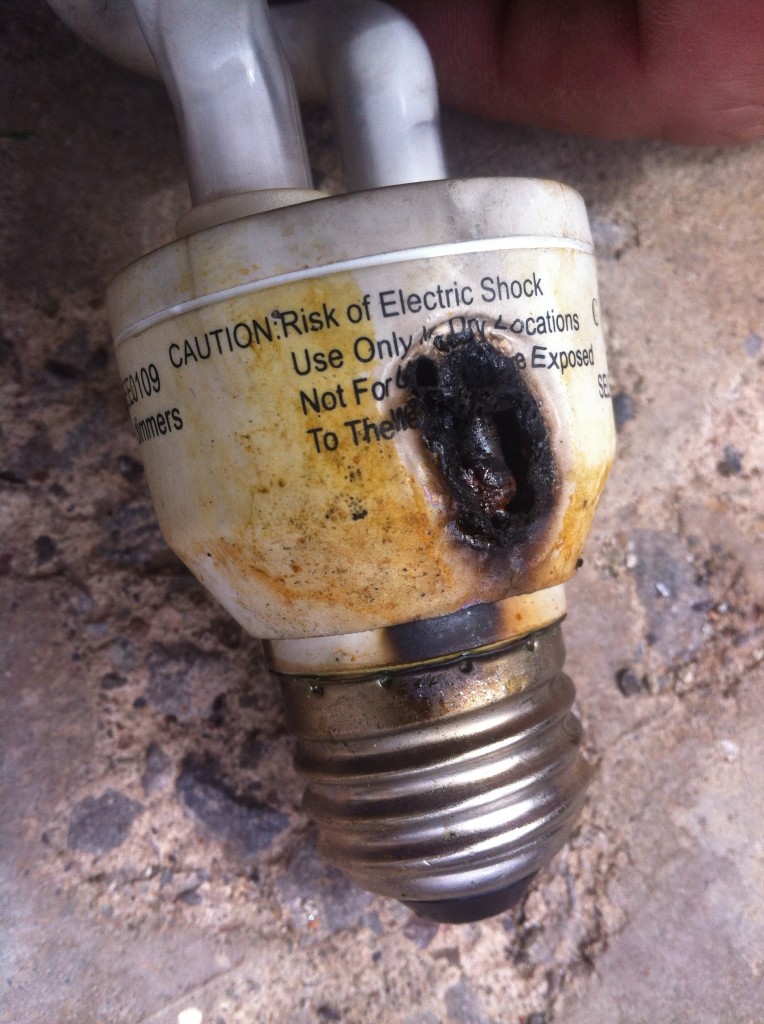
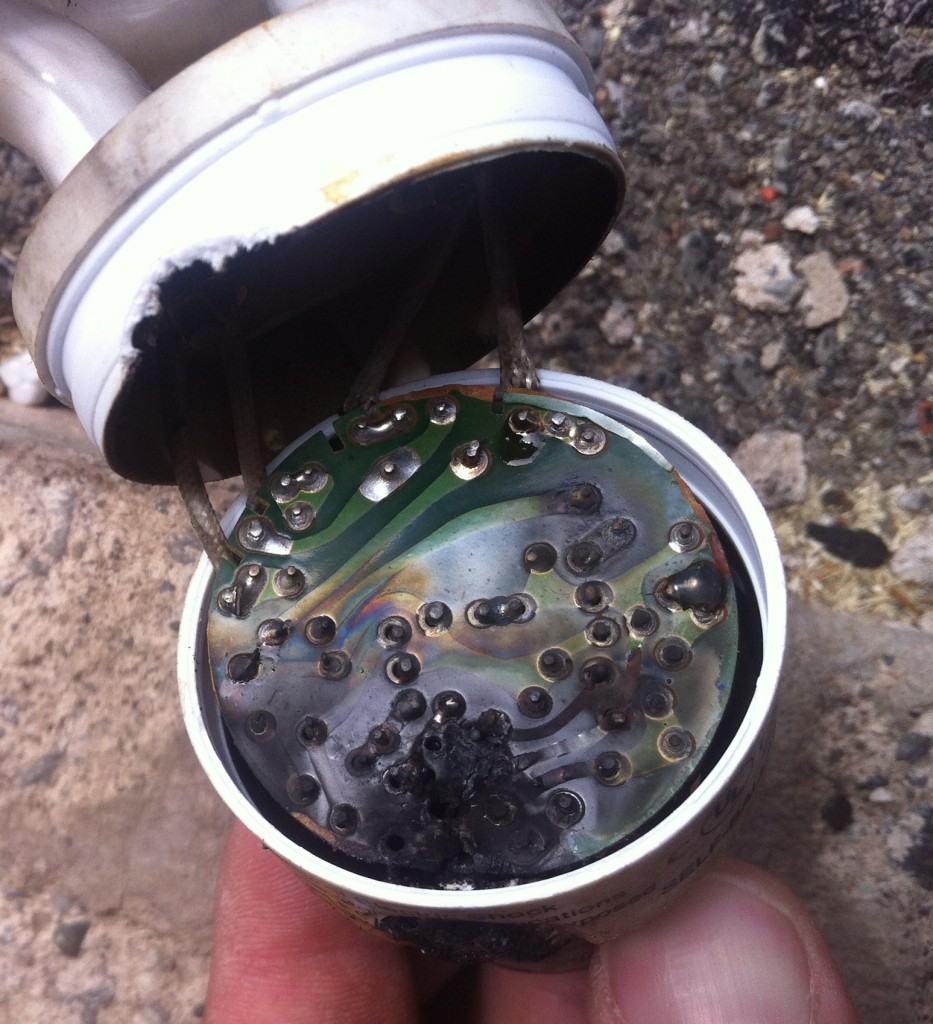
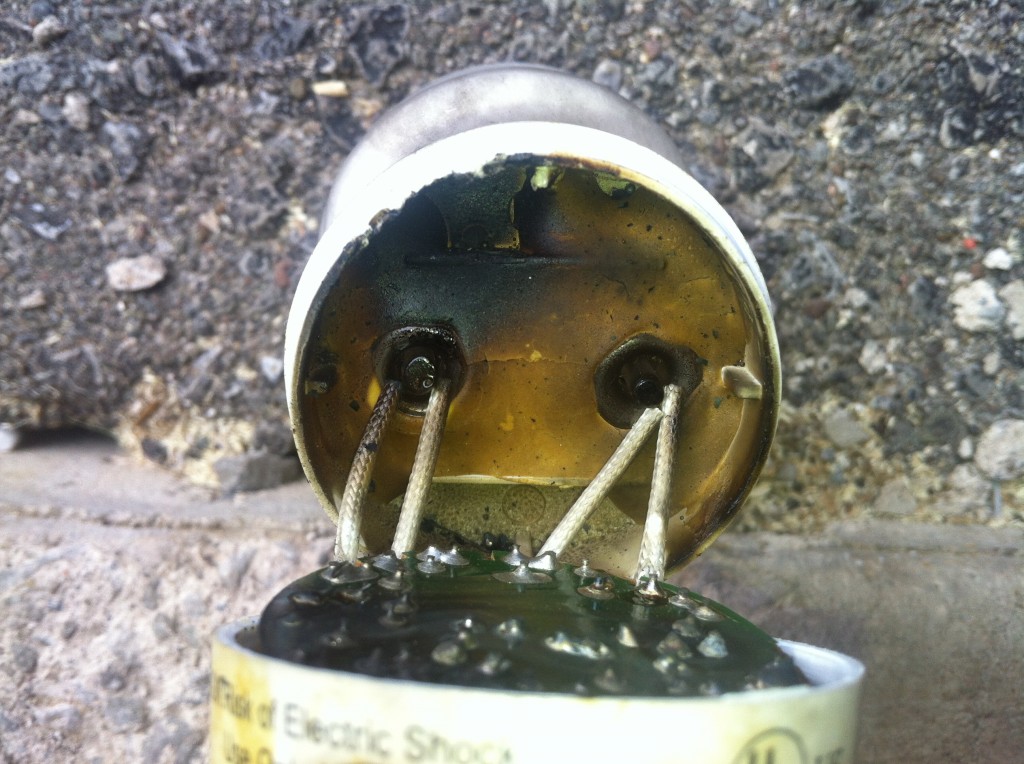
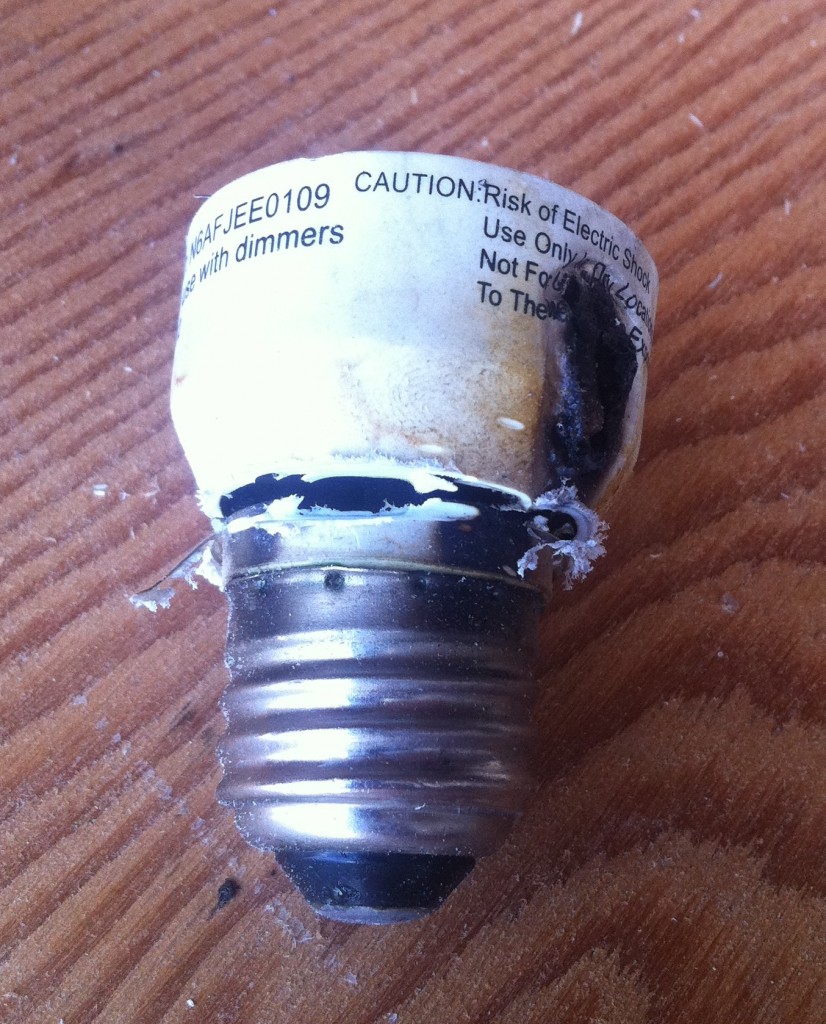


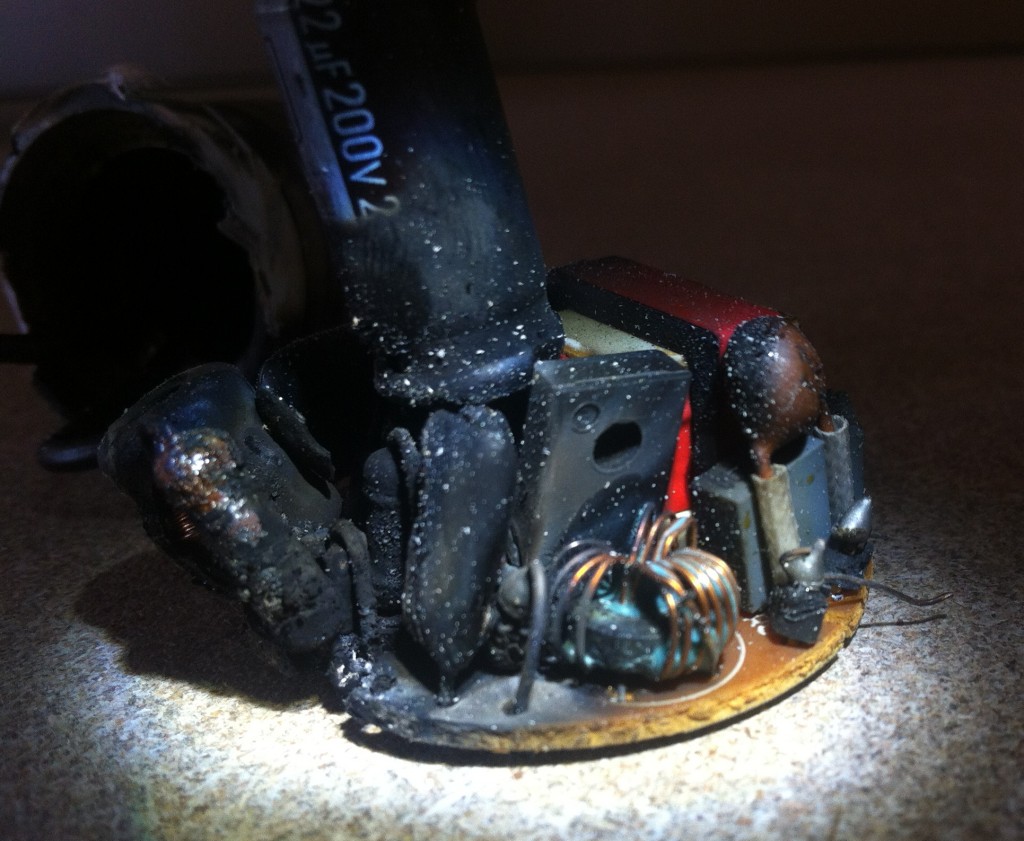
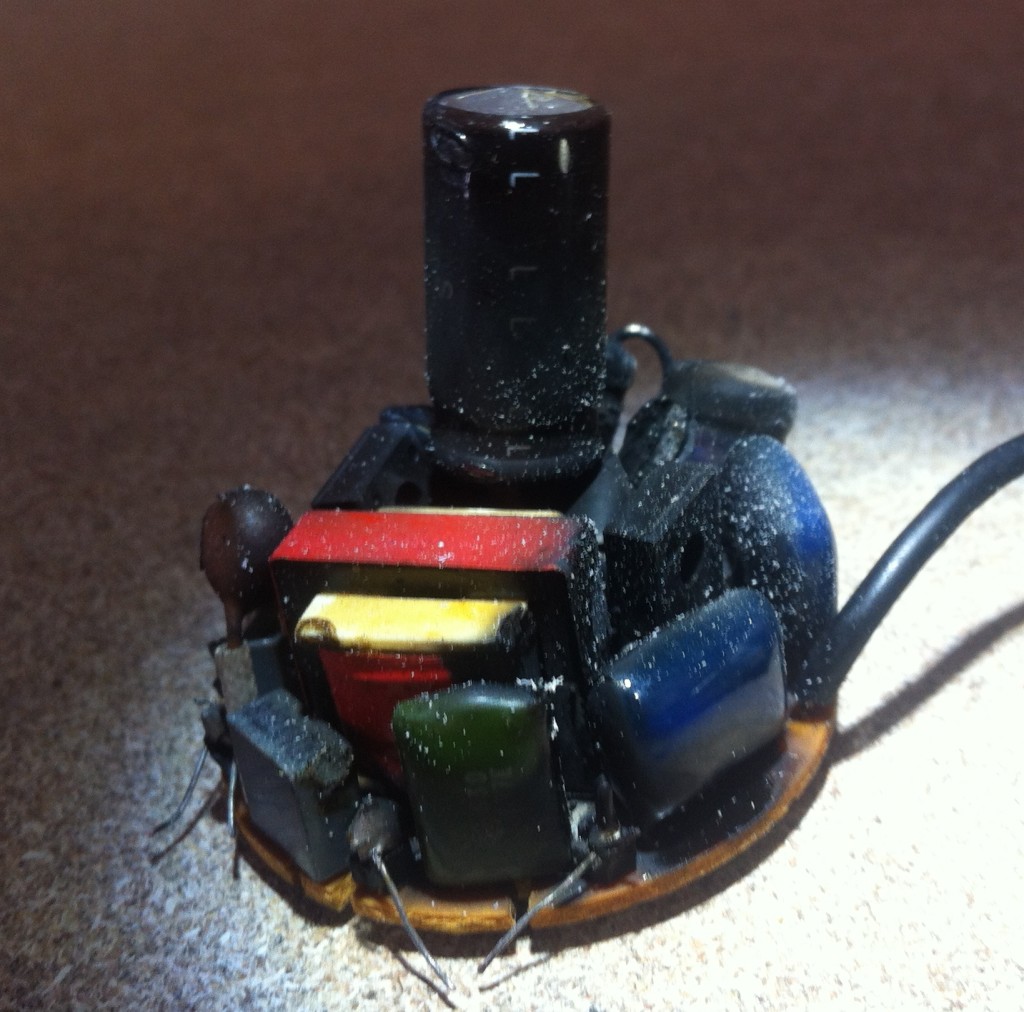
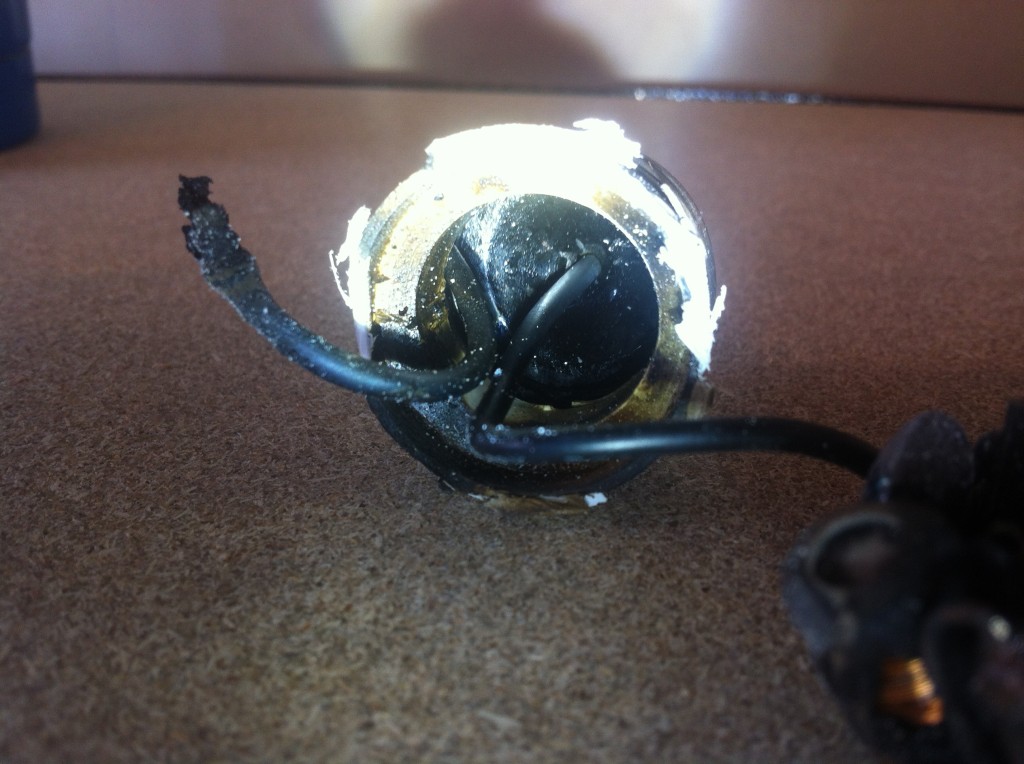
The problem I think these have is the use of a resistor as a fuse.
It’s touching other things which it could ignite when it overheats and blows, as it is intended to do. It’s not as safe as a regular fuse because of this.
Basically, they cheap out and use a resistor instead of a fuse.
Don’t be fooled if someone says the resistor is flame-proof. Even if flame proof, it doesn’t mean it can’t catch fire to something else, or emit sparks.
The manufacturers deny this ever happens, even though it happens very often. I’ve had it happen to myself, and it’s scary! They need to get their heads out of their asses and set things straight – not by hiding safety issues via legal means, which IMHO, is downright immoral. They do this all the time though.
-Ben
Does that bulb happen to be made by “Globe”?
If so, that bulb was likely one that was recalled for fire issues like this.
To me, it looks like there was possibly a failure of the switching transistor(s) or a capacitor in the HV section of the ballast, right by the large transformer-like inductor. It’s hard to tell without being able to see it in my hands though.
My guess is that the resistor – which is meant to burn open-circuit – failed to break the circuit. I can see a metal bead on it, which is indicative of very high temperatures – like the temperatures you get from arcing.
The failure could have also been caused by the normal end of life of the bulb portion.
Gah, this is why I hate it when they use fusible resistors! I’d be happy to spend an extra 10 cents on each bulb just to get a proper fuse in there instead …
The green toroid/transformer core could have cracked and shattered from the heat.
Funnily enough, manufacturers say this type of failure is normal!!! I’m not kidding!!! Ask them and I bet you that is what they will say!
They’ll tell you that the plastic is flame-retardant, and that there are safety circuits inside to protect the ballast when the bulb reaches EOL. But the real issue is that when the flame-retardant plastic is heated up, it WILL burn! The extra heat source was the arcing around where the power leads connect to the PCB … also where the fusible resistor is located … go figure! …
Whoops … disregard that last comment … XD
For some reason, my original comment didn’t show until I posted the previous comment!